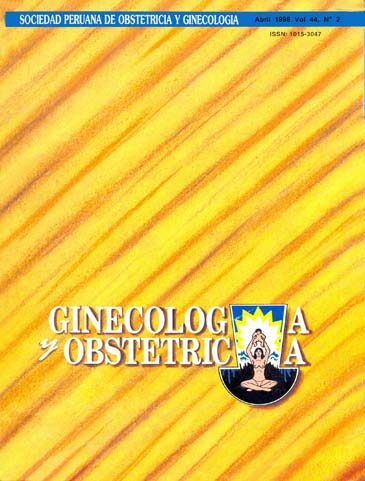Abnormal cervical cytology; distribution by age groups
DOI:
https://doi.org/10.31403/rpgo.v44i968Abstract
OBJECTIVE. To evaluate distribution of intraepithelial squamous lesions (ISL) detected by citology and to determine priority age groups in cervical cancer detection. DESIGN. Retrospective descriptive study. METHODS. Study of 61846 cervical citologies obtained at DISUR II eripheric centers between january 1994 and december 1996. Statistical analysis was by frequencies, percentages and statistical validation by Epi-In/b. RESULTS. Sixty-five percent of Papanicolaou smears were obtained from women below 30 year-old and 35% from older women. Women below 30 bad low grade ISL (ISL-LG) in 0,3% and high grade ISL (ISL-HG) in 0,07%; older women bad 0,24% ISL-LG and 0,38% ISL-HG. CONCLUSION. If we consider that the woman with ISL-HG has a higher risk toprogress to cervical cancer and that ISL-HG increases after age 30, we recommend to start studying cervical citology at this age.Downloads
Download data is not yet available.
Downloads
Published
2015-06-19
How to Cite
Jerónimo, J., Yara, I., Chumbe, O., Vega, L., & Orderique, L. (2015). Abnormal cervical cytology; distribution by age groups. The Peruvian Journal of Gynecology and Obstetrics, 44(2), 97–100. https://doi.org/10.31403/rpgo.v44i968
Issue
Section
Artículos Originales
















